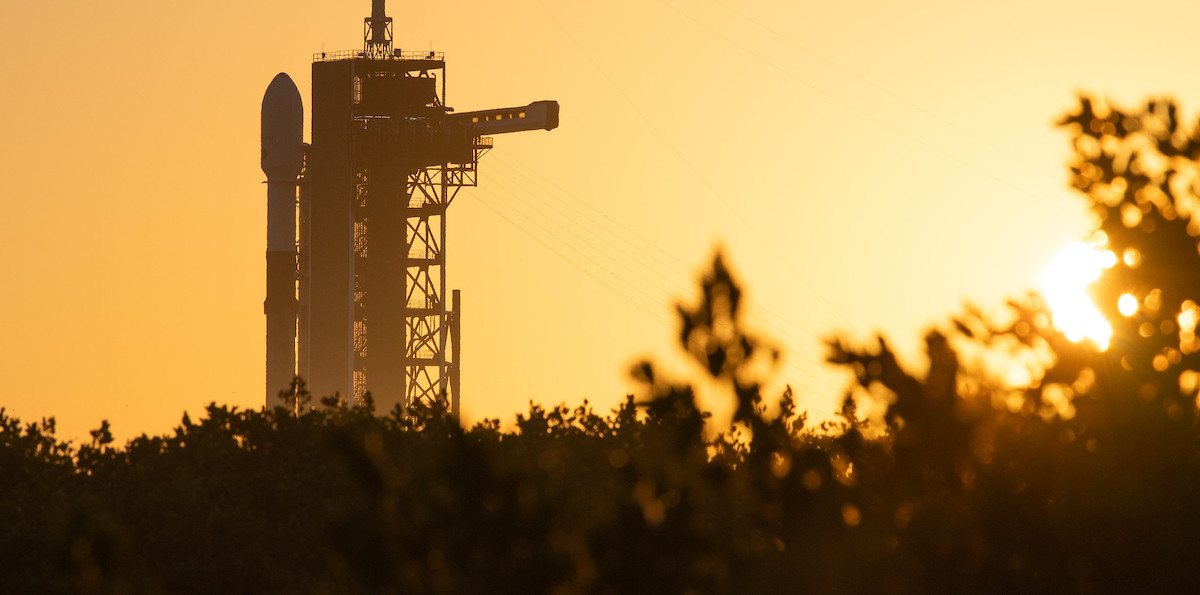
SpaceX teams in Florida and California are preparing for three missions from three launch pads in three days, beginning Friday with a launch from the Kennedy Space Center in Florida with a reusable Falcon 9 booster flying for a record 13th time.
The flight Friday will deploy 53 more Starlink internet satellites, followed by a launch Saturday from Vandenberg Space Force Base with a German military radar observation satellite, then another mission from Cape Canaveral early Sunday with a commercial Globalstar messaging and data relay spacecraft.
Assuming weather and technical issues don’t delay any of the missions, the rapid-fire launch schedule would mark the fastest sequence of flights by SpaceX since the company’s founding.
The missions this weekend will be the 24th, 25th, and 26th Falcon 9 rocket launches this year. That will match the total number of Falcon 9 launches SpaceX completed in 2020. Last year, SpaceX launched 31 Falcon 9 missions, and the company could approach 60 Falcon 9 missions this year.
SpaceX is aiming to fly an average of once every five days from one of its active Falcon launch pads.
In order to save time, the company no longer performs test-firings before most of its launches, after seeing good performance of its reusable boosters mission after missions. Engineers are also streamlining refurbishment and inspections on boosters between flights, according to a report published this week by Aviation Week & Space Technology.
According to Aviation Week, SpaceX has qualified its reusable Falcon 9 boosters for at least 15 missions, up from the 10-mission goal the company stated when it debuted the Block 5 booster — the latest iteration of the Falcon 9 — in 2018.
The magazine reported SpaceX put booster components through vibration testing to four times the fatigue life of what they would experience over 15 flights, giving engineers confidence that the rockets will continue to fly successfully.
Another deployment flight for SpaceX’s Starlink internet network is next in line on the company’s schedule. A Falcon 9 rocket is set to blast off from pad 39A at the Kennedy Space Center at 12:08 p.m. EDT (1608 GMT) Friday with 53 more broadband relay satellites, pushing the total number of Starlink craft launched to more than 2,700.
The Falcon 9 booster flying on the Starlink mission — tail number B1060 — has previously flown 12 times. It debuted June 30, 2020, with the launch of a U.S. Space Force GPS navigation satellite. After launching for a 13th time Friday, the booster will land on a SpaceX drone ship northeast of Cape Canaveral in the Atlantic Ocean.
The weather forecast Friday calls for a 90% chance of favorable conditions for liftoff from pad 39A.
SpaceX’s Falcon 9 rocket will target a transfer orbit ranging between 144 miles and 209 miles in altitude (232-by-337 kilometers). Deployment of the 53 flat-packed satellites from the Falcon 9’s upper stage is expected about 15 minutes after liftoff.

Two more Falcon 9 rockets are scheduled to take off later this weekend.
A Falcon 9 rocket is set to launch an Airbus-built German military radar surveillance satellite after 10 a.m. PDT (7 a.m. PDT; 1400 GMT) Saturday from Vandenberg Space Force Base in California. That mission will utilize a Falcon booster making its third fight. The first stage will return to Vandenberg for an onshore landing after sending the four-ton SARah 1 radar imaging satellite toward orbit.
Another Falcon 9 is set to blast off from pad 40 at Cape Canaveral Space Force Station around 12:30 a.m. EDT (0430 GMT) Sunday with a spare satellite for Globalstar’s commercial messaging and data relay constellation. The satellite, built by Thales Alenia Space in Italy, will launch on a booster that will be flying for the ninth time. The first stage will return to Earth for landing on a drone ship in the Atlantic Ocean.
Email the author.
Follow Stephen Clark on Twitter: @StephenClark1.
from Spaceflight Now https://ift.tt/1FfNkhT
via World Space Info







0 comments:
Post a Comment